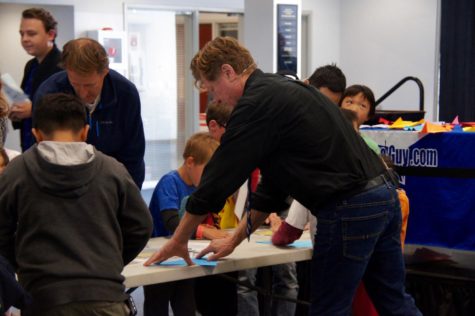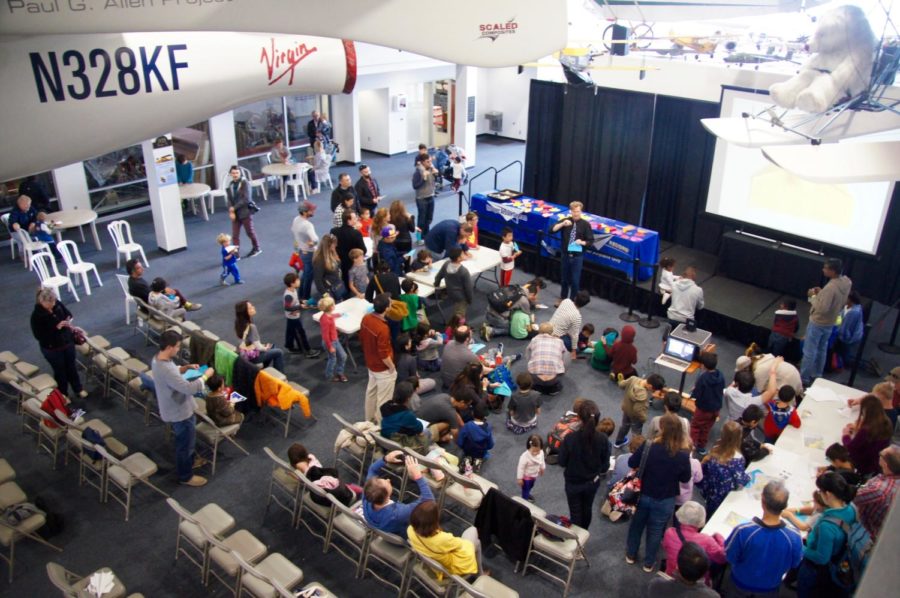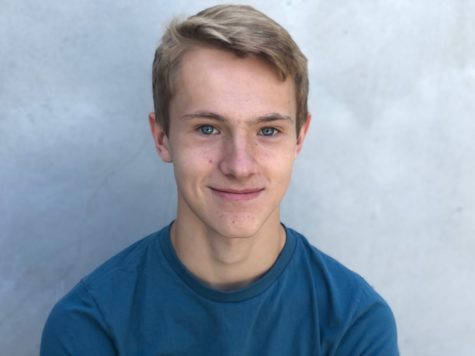On the rainy Sunday morning of May 26, 2019, about 60 young kids and their parents gathered at the Hiller Aviation Museum to learn about the science of flight and to build something that set a world record.
Bay Area native John Collins, also known as Mr. Paper Airplane, entertained the eager audience with his presentation about paper airplanes.
Collins, whose earlier career was in the television industry, is a self-taught expert on folding high-performance paper airplanes using aerodynamic concepts. He is famous for holding the world record for the farthest distance traveled by a paper airplane. Collins publishes books about paper airplanes and presents his inventions all over the world.
Collins has been folding paper airplanes for more than 40 years.
“I always have loved paper airplanes. I come from a family of brothers … [We] were pretty competitive. I was just a little bit better at paper airplanes. That was something I could excel in. So that was very reinforcing early on,” Collins said.
Collins studied origami for several years to reinforce and develop his folding skills. With the publication of his first book in 1989, “The Gliding Flight: 20 Excellent Fold and Fly Paper Airplanes,” he began making presentations at libraries while continuing to work in television.
With the help of his thrower, Joe Ayoob, Collins spent three years perfecting the world record paper airplane that flew 226 feet and 10 inches on February 26, 2012. This distance is approximately equivalent to throwing from the endzone on a football field and hitting the other side’s 35-yard line. Collins’ record surpassed the previous record by an impressive 19 feet.
Following his world record, Collins began touring the world in 2016 and now has exhibited his designs on every continent except Australia and Antarctica. He has performed in venues like The Maker Fair, TEDx, and Harvard. He has also appeared on talk shows, such as Conan, and was interviewed by publications like The Wall Street Journal, Daily Mail UK, Smithsonian, and Wired Magazine.
The presentation at the Hiller Aviation Museum consisted of Collins explaining and throwing the different paper aircraft that he has invented over the years. While some were conventional paper airplanes, gliders, or darts, others were designed with entertainment in mind. These included aircraft like the Bat Plane, which appears to flap its wings as it flies, the Boomerang, which circles back to you when you throw it, and the Boomerang 2, which flies out, does a flip, and flies back to the thrower upside down. Collins’ other designs include aircraft shaped like a tube and others with origami bird heads folded into them like the pelican and the crane.
These exciting designs were a favorite among the younger audience members.
7-year-old Lionel, who has folded the paper airplanes in Collins’ book, said, “I really liked seeing [Collins] flying all the different planes, especially the Starfighter.”
For each of his designs, Collins gave an insight into the physics behind the plane’s behavior as it flew through the air. He explained the fundamentals of aerodynamics in a way that allowed the young audience to understand advanced topics.

Collins helps a younger audience member fold his world record airplane.
Following the presentation, Mr. Paper Airplane broke out a large stack of paper and led a step-by-step lesson on how to make his world record airplane. Following the final stage of instruction, the once calm space was replaced by a storm of newly constructed paper airplanes flying through the air. While most of the builders were kids, there were several adults curious about how to build the record-breaking plane.
Part of the appeal of paper airplanes is how simple and accessible they are to all.
“Everyone has some kind of experience with [paper airplanes] already … [and] you’re using the thing that most people throw away by the ton on a daily basis. So you can get your hands on the raw material,” Collins said.
Collins’ presentation stressed that one could learn science through fun and familiar activities like making paper airplanes. He concluded the presentation by emphasizing the importance of science and encouraged the audience to celebrate it.


